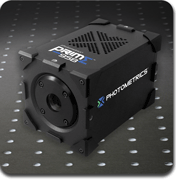Page 10915
Jun 9, 2016
Big Government Courts Small Startups
Posted by Karen Hurst in categories: government, health, internet
Silicon Valley is trying a new approach in get new tech into the US government (states, counties, and cities/ towns) hands.
I think most of us can agree that the internet poses some unique and wide-scale risks to our privacy.
Our every move online can be — and often is — tracked. In the past, it might have been hard for companies or the government to know your interests, political leanings, religious affiliation or health problems. But they can glean all that and more by simply watching what you do on the internet.
Jun 9, 2016
We can now communicate with plants
Posted by Bruno Henrique de Souza in category: futurism
Jun 9, 2016
Measuring time is a crucial part of navigation – particularly in space, where exacting precision is called for
Posted by Klaus Baldauf in categories: futurism, space travel
Jun 9, 2016
Physical objects could, theoretically, pass through a wormhole at the centre of a black hole
Posted by Sean Brazell in category: cosmology
Objects may be able to pass through a wormhole at the centre of a black hole despite extreme forces.
Jun 9, 2016
Welcome to Larry Page’s Secret Flying-Car Factories
Posted by Klaus Baldauf in category: transportation
Jun 9, 2016
Scientific camera from Photometrics features high quantum efficiency
Posted by Karen Hurst in categories: electronics, quantum physics
Featuring backside-illuminated sensor technology providing 95% quantum efficiency, the Prime 95B from 2016 Innovators Awards silver-level honoree Photometrics is reportedly three times more sensitive than the current generation of sCMOS cameras. The camera features a GSENSE400BSI-TVISB scientific CMOS (sCMOS) sensor from Gpixel Inc., which is a 1.44 MPixel sensor with a 11 µm square pixel size that can achieve a frame rate of 41 fps in 16-bit and 82 fps in 12-bit. The Prime 95B, according to Photometrics, is optimized for low-light microscopy and life sciences imaging applications because of its ability to collect nearly all available light, and maximize the signal-to-noise ratio of the experiment while minimizing cellular photo damage. Additionally, the camera features forced air or liquid cooling options, as well as a PCIe and USB 3.0 interfaces.
Jun 9, 2016
Want To Stay Healthy? You’ll Need To Become A Human-Animal Hybrid
Posted by Karen Hurst in categories: biotech/medical, health
No thanks.
Biologists have been mixing the DNA of different animals since the 1970s, but the idea of injecting the genes of animals into humans remains taboo. Called transgenics, it’s a practice that could cure illness in the future — and eventually reshape our species. Here’s what you need to know about it.
Illustration by Jim Cooke.
Continue reading “Want To Stay Healthy? You’ll Need To Become A Human-Animal Hybrid” »
Jun 9, 2016
Chemical reaction lights the way for tracking microRNA in living organisms
Posted by Karen Hurst in categories: biological, genetics
The ability to track molecular events inside the cells of living organisms offers a powerful window into fundamental biological processes, but methods for visualizing RNA in vivo without interfering with cell processes have been elusive. Now, researchers have developed a light-induced chemical reaction that accomplishes this feat in live zebrafish embryos (ACS Cent. Sci. 2016, DOI: 10.1021/acscentsci.6b00054). It is the first technique for detecting specific strings of nucleic acids in live vertebrates that doesn’t require genetically modifying the organism. What’s more, it’s sensitive enough to visualize the expression of microRNAs, small noncoding RNAs that act as puppetmasters of gene expression.
To do the reaction, chemical biologist Nicolas Winssinger, biochemist Marcos Gonzalez-Gaitan, and their colleagues at the University of Geneva designed two nucleic acid probes that each complement and bind to adjacent halves of a target microRNA sequence. The researchers conjugated one probe to a ruthenium complex that absorbs visible light and the other to a fluorogenic rhodamine that lights up when its azide bonds are cleaved. When the probes attach to the target sequence, the two reagents come close enough to react. Shining a light on the sample activates the ruthenium which then reduces the azide in the rhodamine conjugate, releasing its fluorescence. The dependence on external light allows researchers to control when the reporting reaction happens, Winssinger explains.
The team first developed the system three years ago (Chem. 2013, DOI: 10.1002/chem.201300060) for use in cultured cells; here, they adapted it for use in just-fertilized zebrafish embryos. “That’s really not trivial,” says Winssinger. The probes had to be nontoxic, stable for a day or more, and powerful enough to work even after being diluted through cell division.
Continue reading “Chemical reaction lights the way for tracking microRNA in living organisms” »

















